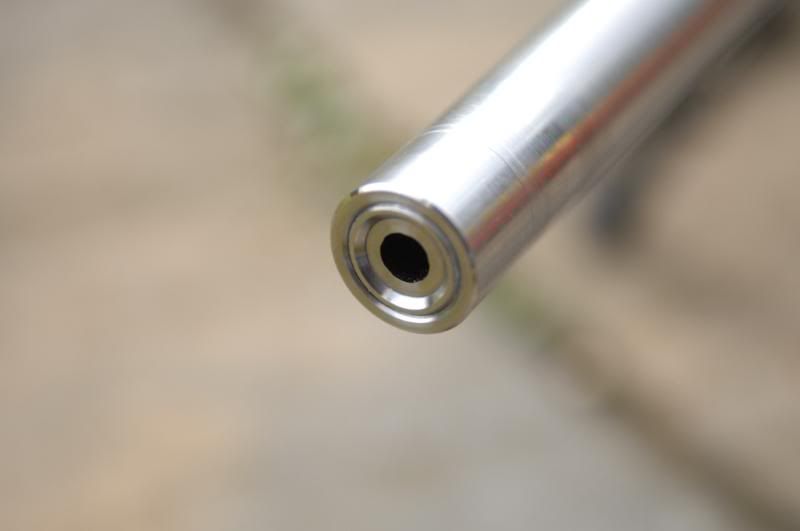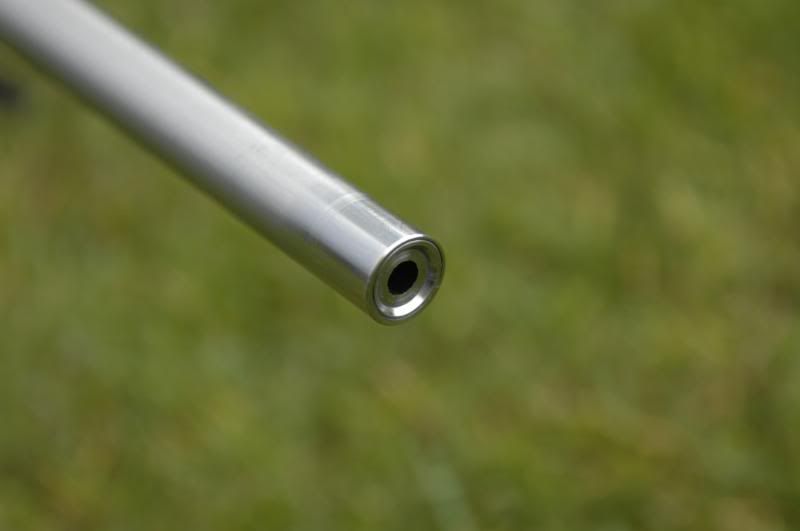Re: crowns
Another good one; says a 11 degree produced best accuracy from a machine rest:
(Bart Bobbitt)
Subject: Re: Crowning
Crowning a rifle barrel, in simplest terms, is shaping the muzzle so
the rifling's edge is protected from impact. Most factory barrels have
a round, convex-shaped crown from bore's edge to the barrel's outside
diameter. That's easy to make and finish, plus looking rather pleasing.
The accuracy part of the crown means the land and groove part of the
barrel must let the bullet's base exit evenly all the way around. When
this happens, gas escapes uniformly and evenly around the bullet's base.
If gas escapes unevenly (poor crown, even unsquare bullet bases), the
point of greatest gas release will push the bullet in the opposite
direction and tilt it. Tilted bullets leaving the barrel just don't
shoot straight; how far they move sideways depends on their velocity,
spin rate, and degree of tilt (or yaw, as it's sometimes called).
Some factory barrels have different-shaped crowns. Some will have the
muzzle faced flat at right angles to the bore from outside diameter to
inside bore diameter. Others will have a flat face, but the lands
will be angled back some amount. A counter-bored crown is set back
from the front-most part of the muzzle, then the inside part will be
either flat-faced or angled.
In the late 1950s and early 1960s, a few smallbore and highpower
competitive shooters wore out a few barrels doing tests with different
muzzle face and crown ideas, dimensions, etc. Fired from machine rests,
the results were often opposed to what most folks thought was the best
way to face/crown a rifle barrel's front end for best accuracy. Here's
what they found out produced the best accuracy:
* The face (part from barrel's outside diameter to the groove diameter)
must be centered on bore center. This means turning the barrel with
its center at the exact middle of rotation. This gets the bore edge
of the face perfectly centered.
A flat, eleven-degree face produced the best accuracy with both
smallbore and highpower match rifles. That's 79 degrees back from
the bore axis looking forward; 11 degrees from a plane perpendicular
to the bore axis.
* The crown (part from bore diameter to groove diameter, about .004-in.
in 30 caliber barrels) angle doesn't matter much, as long as the back
of the crown is deeper in the bore than its front. This protects the
bore-edge of the crown.
A round, brass ball charged with fine lapping compound is typically used
after the muzzle's faced to 11 degrees. This way, the crown is concentric
with the bore just like the face.
No other face and crown angles have been as successful in match rifles as
these. If the barrel can't be turned on it's true bore center, then a
flat, zero-degree face/crown is probably best; it'll give the squarest edge
for the bullet to exit.
There's a lot of ideas regarding what's the best crown/face thing to do.
BB






